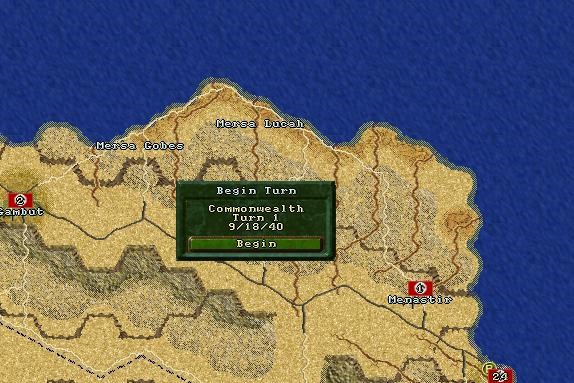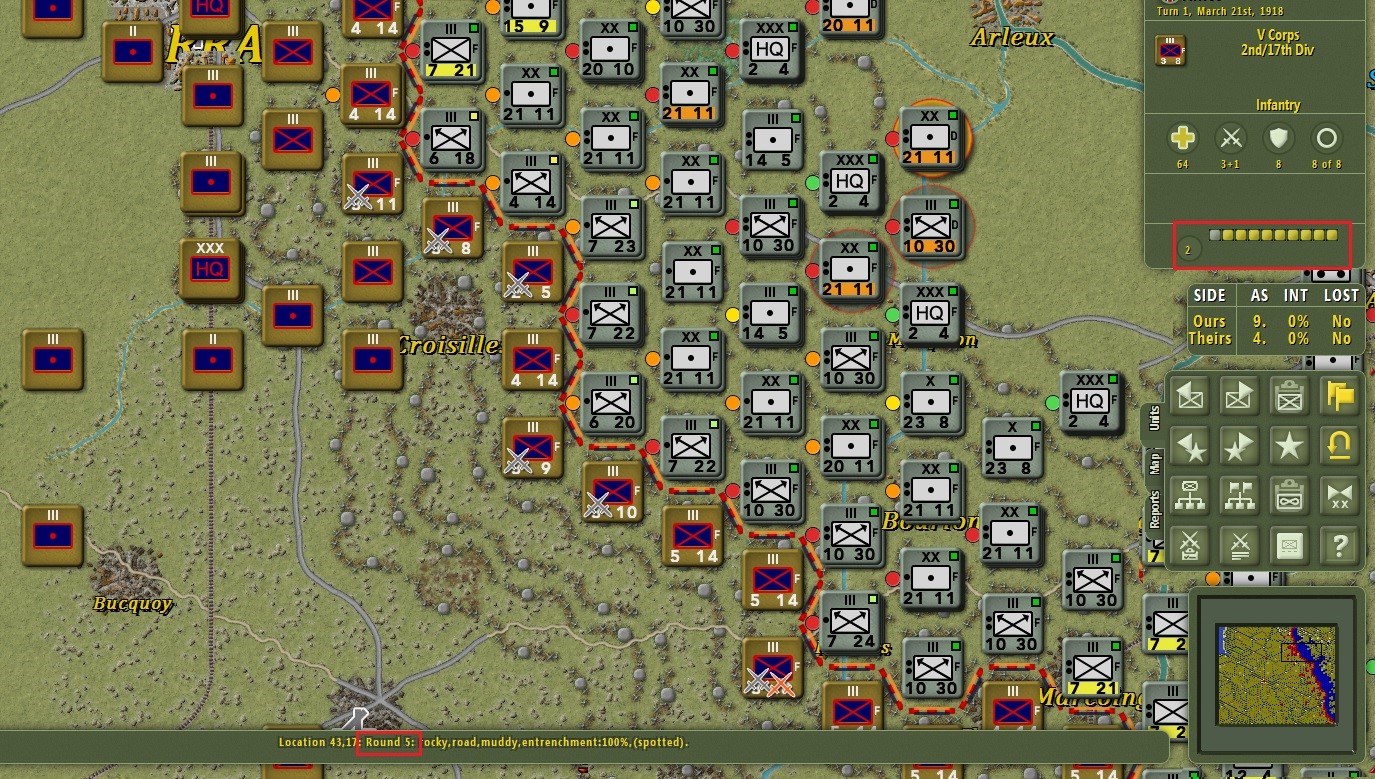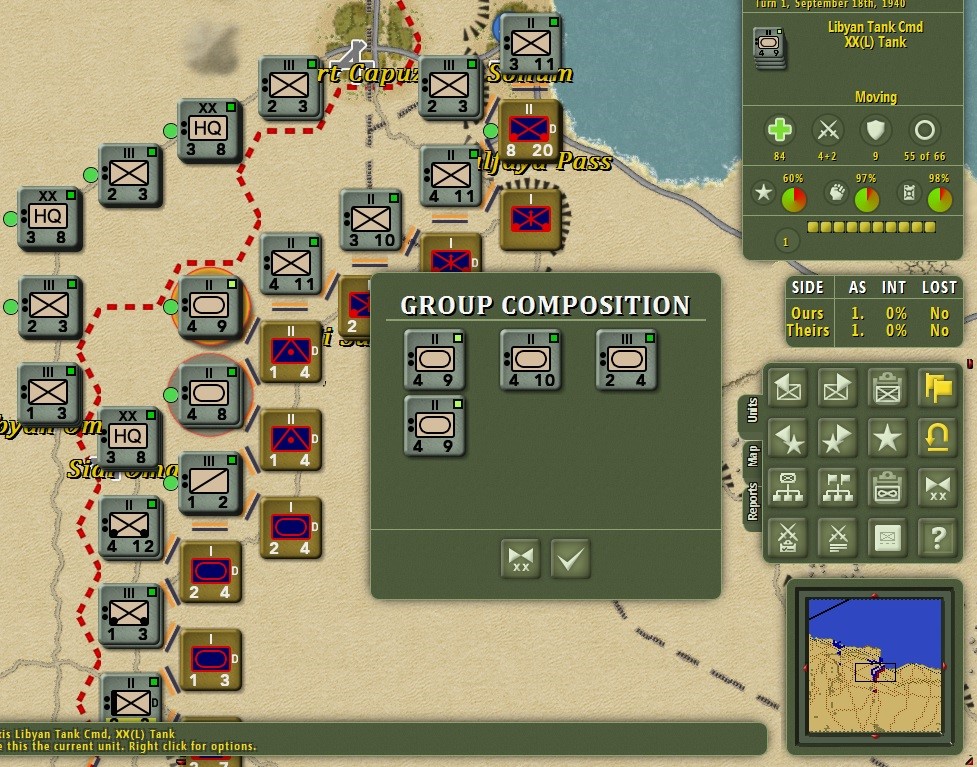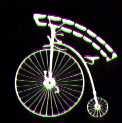Daniele
Posts: 1812
Joined: 2/7/2015
Status: offline

|
BATTLEFIELD TIMESTAMPS
by Bob Cross
Let’s take a trip back in time to about 2002. TOAW exists, but as “ACOW”. You’re a newbie just starting out with the game. If you perused the manual you might have seen these few items:
Individual battles are resolved in a series of tactical rounds. Each player turn is divided into ten tactical rounds, and individual battles begin on the round that most closely corresponds to the proportion of the attacking units’ movement allowance expended before the combat. …
Battles continue until all units of one side have broken off, but not beyond tactical round 10. …
After combat, all of your units will have their remaining movement allowances adjusted to reflect the highest tactical round needed to resolve all attacks. …
Your turn will end if either of the following conditions apply:
• You have launched no attacks.
• The mean remaining movement allowance of your entire force is too small to allow for successful exploitation of your attacks.
• Your force fails a proficiency check.
But, in a huge manual, those scattered tidbits can be missed, or their importance overlooked. You want to get started.
You fire up the CFNA scenario and start setting up Axis attacks. One attack involves a foot unit that has moved quite a distance:

Note that the unit has expended 23 of its 28 MPs. The 5 remaining MPs amount to only 18% of its original movement allowance. So this unit has a Time Stamp of 9 out of 10. This attack is going to cause your turn to end. But, as a newbie, you’re unaware of this. Perhaps you go on to setup several more attacks. Then you execute your attacks. After they are all resolved, you get this screen:

You stare at it in disbelief. There were a potential ten combat phases, and you only got one. And note that there isn’t even a reason given for the early turn ending or even which combat was the issue. You are left to gape in wonder.
This is where newbies often got off the TOAW bandwagon. But, even if they didn’t, and hung around long enough to figure out the deal with using late units in attacks, there was another way to get the early turn ending that stymied even veteran players: Attack Complexity.
As the manual said, battles continued till one entire side broke off. So, really complex combats with lots of determined units on both sides could last several rounds – even the entire player turn. And the bigger the scenario, the more such attacks each combat phase tended to have. Huge scenarios were thus often harried by such combats, far more so than smaller, simpler scenarios – just because they had more combats. Obviously, this didn’t make any realistic sense, and tended to sour even veterans on the game. “Why should a battle in North Africa screw up action in the Ukraine” was the complaint. And they were right. Something had to be done.
Move forward to about 2007 and TOAW III. Two features were added: The “Circle of Stars” and MRPB.
The “Circle of Stars” reflected both the current round, and the max start round that had been setup in planned combats. So, if properly monitored, this feature could alert players to the presence of late units in attacks. But it did require that monitoring. Fail to notice and you could have the same result as in the first example.
MRPB (Max Rounds per Battle) could put a limit on individual battles lasting very many rounds. But, it required designer action before it could have any effect. And a value below three induced some strange combat effects (not to mention removing most of the skill required to play the game). Since most existing scenarios won’t ever see designer action again, and a limit of three still can waste two rounds, this was still not ideal.
Finally move forward to 2017 and TOAW IV. New feature: Battlefield Timestamps.
Under the Battlefield Timestamp system, after all combats are resolved, the player-turn will advance to the combat round of the MEDIAN length combat. In other words, if there were seven combats that lasted 1, 1, 2, 2, 3, 3, & 6 rounds respectively then the player turn would advance only two rounds, instead of the six rounds of before. Note that this means that three combats lasted longer than the round of the new combat phase. This will be accounted for by placing a TIME STAMP in those three hexes that will equal their actual ending round.
TIME STAMP definition: The fraction of the player-turn, in tenths, that has been expended. This applies to the Player-Turn itself, to Units (the fraction of their MPs that they have expended), and now to battlefield hexes.
Movement effects of Battlefield Time Stamps: Any unit that enters a hex with a Battlefield Time Stamp will have its movement points reduced until its unit time stamp is at least equal to that of the hex.
Combat effects of Battlefield Time Stamps: Combats planned for a hex with a Battlefield Time Stamp will start on a combat round as if the player-turn is the same as the hex’s time stamp. All units that participate in a combat that results in a Battlefield Time Stamp have their time stamps increased to the resulting time stamp of the battlefield.
Combat creation of Battlefield Time Stamps: If a combat lasts longer than one round, it creates a Battlefield Time Stamp equal to the last round that combat expended.
In addition, if a defender was prevented from retreating from a combat by non-participating enemy units then the combat’s Battlefield Time Stamp is the greater of the time stamps of the blocking units and the time stamp of the last round of the combat. So, if the combat ended on round five, but there was a blocking unit that prevented the defenders from retreating and it had a time stamp of seven, then the Battlefield Time Stamp would be set to seven (and all participating units would have their time stamps increased to seven). Note that this ends the time-machine effect of blocking units that the game had endured up to this point (This part of the feature is still under development).
RBC creation of Battlefield Time Stamps: Whenever a defender is forced to retreat-before-combat (RBC, also referred to as Overrun) by a unit with a Time Stamp greater than the Player-Turn’s Time Stamp, there is a Battlefield Time Stamp created in the hex equal to the time stamp of the overrunning unit. Note that this ends the time-machine effect of overrunning units.
Battlefield Time Stamps are shown on the map by a dedicated graphic (see below) and their effect on movement is incorporated into the path feature and shown in the unit panel. Note that there is now an option to display the unit’s time stamp on its counter.
After all combats are resolved and the combat phase has been advanced, all Battlefield Time Stamps on the map that are either less than or equal to the new time stamp of the player-turn are erased. So all Battlefield Time Stamps are erased by the end of the player-turn.
Note that by advancing to the MEDIAN instead of the MINIMUM combat length the game retains a requirement for a level of skill in marshalling the player’s combats. Players still need to try to minimize the number of combats that last multiple rounds to get the best amount of combat exploitation. But now a single slip-up or bad break won’t ruin an entire player-turn.
Now let’s try it out in a game.
Here’s a shot showing several attacks set up in Kaiserschlacht 1918 (note the six gold crossed swords). But note the Unit Panel: Somewhere one of the attacks has been set up with a late unit in the attack. We know this because the Current Round is shown as 1, while the Progress Bar (replacement for the Circle of Stars) shows four rounds set to expire upon execution. Note that the unit in the Unit Panel has moved 5 of its 12 MPs. It is late.

This can also be seen by the new Planned Combats dialog:

As shown, of the seven battles (there’s a seventh battle south of the first screen shot) six have no delay – they have been planned without late units. But one has not.
But, despite the clear warning, let’s go ahead and execute the planned attacks.
This shot shows the results:

Note the Progress Bar has one round consumed, the Current Round is 2. So only one round expired on the map – except in one location. Note the six silver crossed-swords showing where battles took place. But one such location also has a bronze crossed-swords in it. That is the Battlefield Timestamp (BTS) symbol.
Now look at the new Combat Results dialog:

Note that one combat consumed 5 rounds, while the other six only consumed 1 round. Remember that under the previous system, that would have meant that the player turn would have advanced to round 6, not round 2. The BTS system has saved four rounds. Only the one hex that had the delayed combat in it has any adverse effects. This was because the median length combat of the seven combats was one round. (1, 1, 1, 1, 1, 1, 5). In order to get this result, most of the combats need to be conducted correctly. The BTS system will shield the player from a minority of slipups or bad breaks. It will not shield him from a majority of screw-ups. Furthermore, note that if you have the idea that you can trick the BTS system with a bunch of one-round bombardments, know that the median formation only includes bombardments if no non-bombardments are involved.
So, skill is still required. Complete boneheaded play will still waste rounds.
To illustrate this, this shot shows just such a boneheaded play: Only one attack is set up – a bombardment with a very late unit. (Note the Progress Bar in the Unit Panel).

The attack is executed. As one would expect, this consumes the remaining rounds in the player turn. (There were no non-bombardments in this combat phase, and only one bombardment – making that bombardment the median). But, unlike back in ACOW, there is now a message informing the player why his turn ended early:

Had the reason been a Force Proficiency Failure, that would have been in the message instead (note that Force Proficiency Failures are not changed by the BTS system – they are legitimate checks on force plans based upon how organized the force is). So, at least the player doesn’t have to wonder what when wrong. If there is any doubt, the Combat Results dialog should clear them up:

Note that the bombardment consumed all remaining rounds.
There is still the issue of BTS’s generated by RBC’s. While RBC’s are not combat, and so will not result in early turn endings, they do force enemy units out of the way of friendly forces. If the unit that forced the RBC had moved a long way to get there to do the RBC, while the nearby units available to exploit the gap forced by the RBC are fresh and unmoved, you can see the time-machine effect the RBC can generate. That’s why such RBC’s now generate BTS’s.
Let’s see this via an example:

A number of armored battalions have moved adjacent to an enemy position. Most came from just across the boundary line, expending only 3 MPs. But one (the top one) came from quite a bit further. As shown, it has expended 11 MPs.
If we now RBC the defender with that unit, this is the result:

Note that there is now a BTS in the RBC’d hex. That BTS is equal to the Timestamp of the overrunning unit. As a result, the exploiting units behind it will have to pay an extra cost to enter the BTS hex – equal enough to raise the exploiting unit’s Timestamp to the same as the BTS.
Let’s look at that cost:

Note that I continued the overrunning unit’s advance, generating another BTS, while evaporating the defender. But now one of the exploiting units is trying to follow its lead. Normally, the cost to enter an empty, unconverted sand hex would be 3 for a motorized unit. But here it is 11. That’s the cost to both enter the hex AND adjust the unit’s Timestamp to the BTS. So, no advantage was attained by using a distant unit to effect the overrun while leaving the nearby exploiting units unmoved. The BTS system has fixed the Time-machine effects of RBC’s.
Only one more thing about RBC induced BTS’s: If you RBC a weak unit all over the map, you’ll now leave BTS’s all over the map as well. That can leave you with a barrier to exploitation. It’s more important than before that such small units are corralled and eliminated, instead of engaging in such silly chases.
Happy Wargaming!
< Message edited by Tamas -- 5/10/2017 2:51:13 PM >
|
 Printable Version
Printable Version


























 )
) 


 New Messages
New Messages No New Messages
No New Messages Hot Topic w/ New Messages
Hot Topic w/ New Messages Hot Topic w/o New Messages
Hot Topic w/o New Messages Locked w/ New Messages
Locked w/ New Messages Locked w/o New Messages
Locked w/o New Messages Post New Thread
Post New Thread